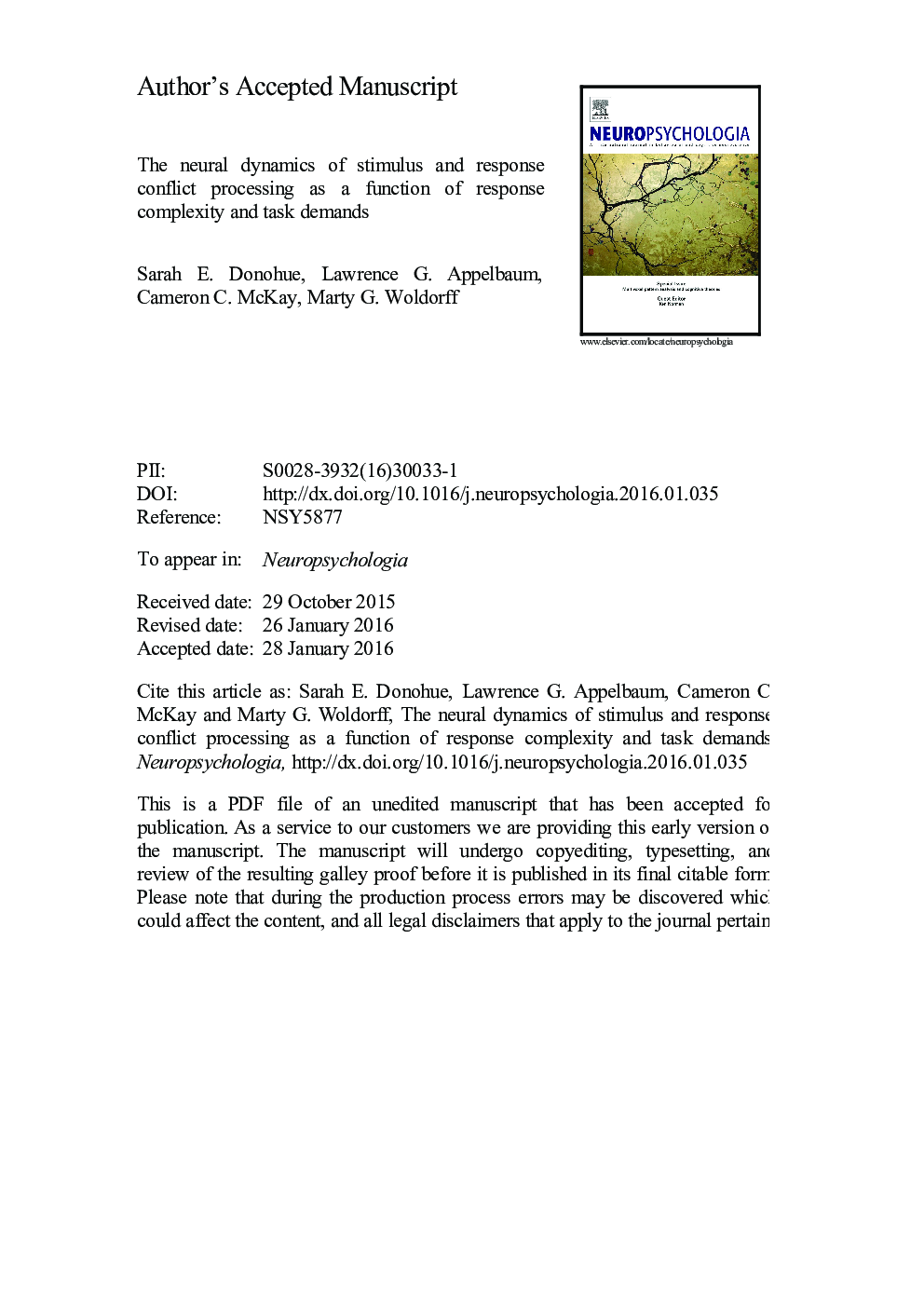| کد مقاله | کد نشریه | سال انتشار | مقاله انگلیسی | نسخه تمام متن |
|---|---|---|---|---|
| 7319103 | 1475570 | 2016 | 35 صفحه PDF | دانلود رایگان |
عنوان انگلیسی مقاله ISI
The neural dynamics of stimulus and response conflict processing as a function of response complexity and task demands
ترجمه فارسی عنوان
دینامیک عصبی پردازش درگیری های محرک و پاسخ به عنوان یک تابع از پیچیدگی پاسخ و خواسته های کار
دانلود مقاله + سفارش ترجمه
دانلود مقاله ISI انگلیسی
رایگان برای ایرانیان
موضوعات مرتبط
علوم زیستی و بیوفناوری
علم عصب شناسی
علوم اعصاب رفتاری
چکیده انگلیسی
Both stimulus and response conflict can disrupt behavior by slowing response times and decreasing accuracy. Although several neural activations have been associated with conflict processing, it is unclear how specific any of these are to the type of stimulus conflict or the amount of response conflict. Here, we recorded electrical brain activity, while manipulating the type of stimulus conflict in the task (spatial [Flanker] versus semantic [Stroop]) and the amount of response conflict (two versus four response choices). Behaviorally, responses were slower to incongruent versus congruent stimuli across all task and response types, along with overall slowing for higher response-mapping complexity. The earliest incongruency-related neural effect was a short-duration frontally-distributed negativity at ~200 ms that was only present in the Flanker spatial-conflict task. At longer latencies, the classic fronto-central incongruency-related negativity 'Ninc' was observed for all conditions, but was larger and ~100 ms longer in duration with more response options. Further, the onset of the motor-related lateralized readiness potential (LRP) was earlier for the two vs. four response sets, indicating that smaller response sets enabled faster motor-response preparation. The late positive complex (LPC) was present in all conditions except the two-response Stroop task, suggesting this late conflict-related activity is not specifically related to task type or response-mapping complexity. Importantly, across tasks and conditions, the LRP onset at or before the conflict-related Ninc, indicating that motor preparation is a rapid, automatic process that interacts with the conflict-detection processes after it has begun. Together, these data highlight how different conflict-related processes operate in parallel and depend on both the cognitive demands of the task and the number of response options.
ناشر
Database: Elsevier - ScienceDirect (ساینس دایرکت)
Journal: Neuropsychologia - Volume 84, April 2016, Pages 14-28
Journal: Neuropsychologia - Volume 84, April 2016, Pages 14-28
نویسندگان
Sarah E. Donohue, Lawrence G. Appelbaum, Cameron C. McKay, Marty G. Woldorff,
